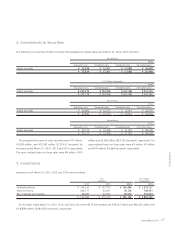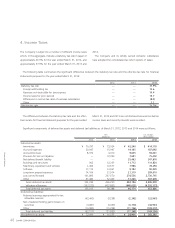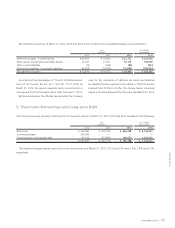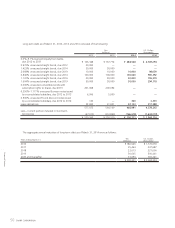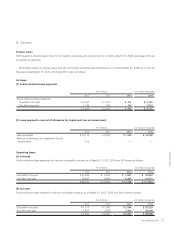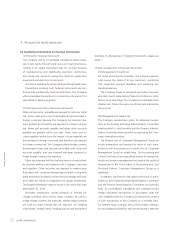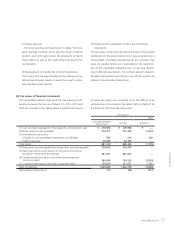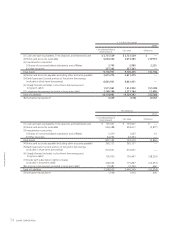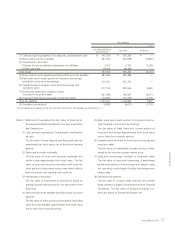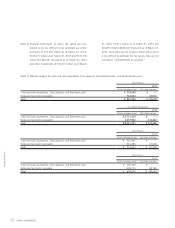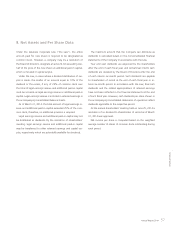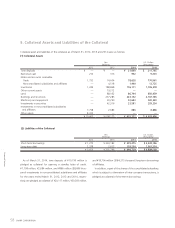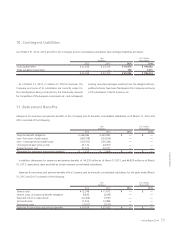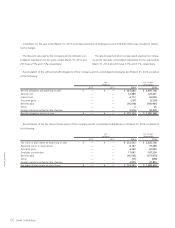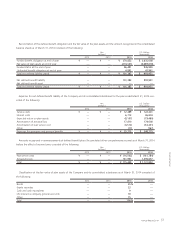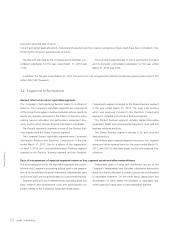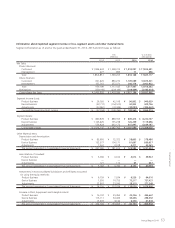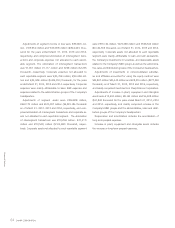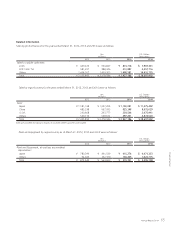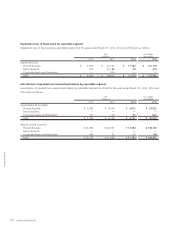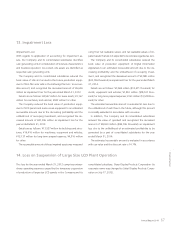Sharp 2014 Annual Report Download - page 59
Download and view the complete annual report
Please find page 59 of the 2014 Sharp annual report below. You can navigate through the pages in the report by either clicking on the pages listed below, or by using the keyword search tool below to find specific information within the annual report.
Annual Report 2014 57
Financial Section
Under the Japanese Corporate Law (“the Law”), the entire
amount paid for new shares is required to be designated as
common stock. However, a company may, by a resolution of
the Board of Directors, designate an amount not exceeding one-
half of the price of the new shares as additional paid-in capital,
which is included in capital surplus.
Under the Law, in cases where a dividend distribution of sur-
plus is made, the smaller of an amount equal to 10% of the
dividend or the excess, if any, of 25% of common stock over
the total of legal earnings reserve and additional paid-in capital
must be set aside as legal earnings reserve or additional paid-in
capital. Legal earnings reserve is included in retained earnings in
the accompanying consolidated balance sheets.
As of March 31, 2014, the total amount of legal earnings re-
serve and additional paid-in capital exceeded 25% of the com-
mon stock, therefore, no additional provision is required.
Legal earnings reserve and additional paid-in capital may not
be distributed as dividends. By the resolution of shareholders’
meeting, legal earnings reserve and additional paid-in capital
may be transferred to other retained earnings and capital sur-
plus, respectively, which are potentially available for dividends.
The maximum amount that the Company can distribute as
dividends is calculated based on the nonconsolidated financial
statements of the Company in accordance with the Law.
Year end cash dividends are approved by the shareholders
after the end of each fiscal year, and semiannual interim cash
dividends are declared by the Board of Directors after the end
of each interim six-month period. Such dividends are payable
to shareholders of record at the end of each fiscal year or in-
terim six-month period. In accordance with the Law, final cash
dividends and the related appropriations of retained earnings
have not been reflected in the financial statements at the end
of such fiscal year. However, cash dividends per share shown in
the accompanying consolidated statements of operations reflect
dividends applicable to the respective period.
At the annual shareholders’ meeting held on June 25, 2014 a
resolution of no dividend to shareholders of record as of March
31, 2014 was approved.
Net income per share is computed based on the weighted
average number of shares of common stock outstanding during
each period.
8. Net Assets and Per Share Data


